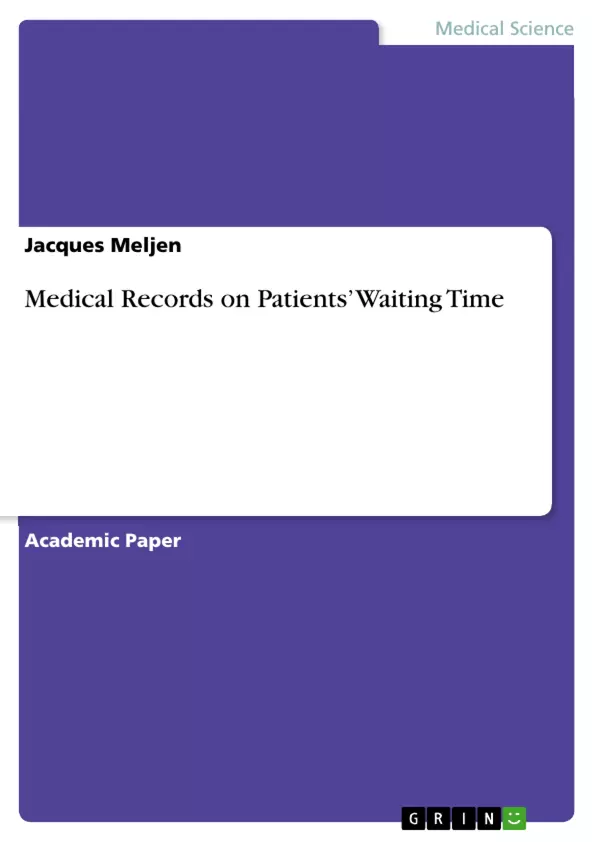Electronic medical/health records (EMR/EHR) systems are known to collect and store patients’ information digitally. Evidence points out that both EMR and EHR can be used to improve patient outcomes and mitigating hospital expenditure through reduced expenses on drugs, minimizing the tests and procedures, decreasing the errors in billing, and improving the documentation of charges on a patient (Jabour, 2020). These benefits imply healthcare organizations can improve the quality of care accorded to patients, increase the productivity of the staff members, and enhance the communication outcomes between the medical practitioners and the patients.
Inhaltsverzeichnis (Table of Contents)
- Examining the Effectiveness of Electronic Health/Medical Records on Patients' Waiting Time-Literature Review
- Current Evidence-Based Research
- Application of Evidence-Based Literature to the Project
- Analysis of the Literature
Zielsetzung und Themenschwerpunkte (Objectives and Key Themes)
This literature review aims to assess the effectiveness of electronic medical/health records (EMR/EHR) on patients' waiting time in emergency departments (EDs). It examines the impact of EMR/EHR on patient satisfaction and explores its potential to improve the quality of care offered to patients.
- Impact of EMR/EHR on patient waiting time in EDs
- Relationship between EMR/EHR and patient satisfaction
- Role of EMR/EHR in enhancing the quality of care in EDs
- Comparison of EMR/EHR systems with paper-based data collection methods
- Implementation strategies for EMR/EHR systems in EDs
Zusammenfassung der Kapitel (Chapter Summaries)
- Examining the Effectiveness of Electronic Health/Medical Records on Patients' Waiting Time-Literature Review: Introduces the topic of EMR/EHR and their potential impact on patient waiting times, particularly in EDs. It highlights the need for a comprehensive review to assess the effectiveness of EMR/EHR in reducing waiting times and improving patient satisfaction.
- Current Evidence-Based Research: This section presents a summary of existing research findings on the impact of EMR/EHR on patient waiting times. It explores various studies that have investigated the relationship between EMR/EHR implementation and patient satisfaction, waiting time, and overall care quality.
- Application of Evidence-Based Literature to the Project: This chapter explores specific examples of how EMR/EHR systems have been implemented in healthcare settings to address patient waiting times. It examines the outcomes of these projects, highlighting both the positive and negative effects of EMR/EHR implementation.
Schlüsselwörter (Keywords)
Electronic health records, electronic medical records, patient waiting time, emergency department, patient satisfaction, quality of care, healthcare information technology, implementation strategies, healthcare organizations.
- Quote paper
- Jacques Meljen (Author), 2021, Medical Records on Patients’ Waiting Time, Munich, GRIN Verlag, https://www.grin.com/document/1157206



